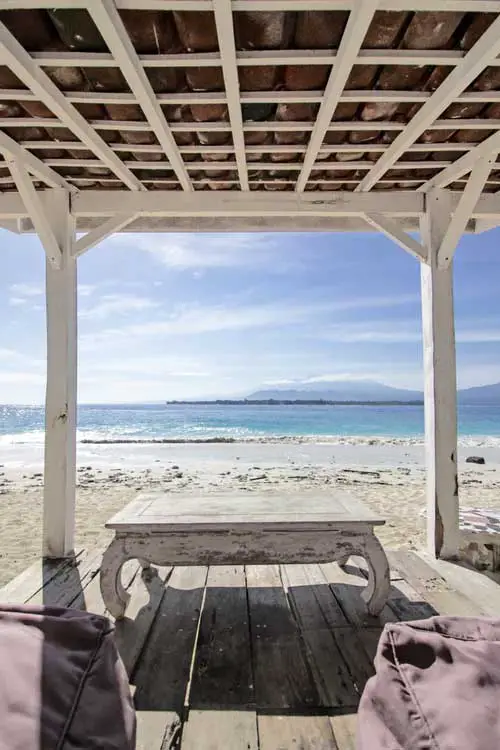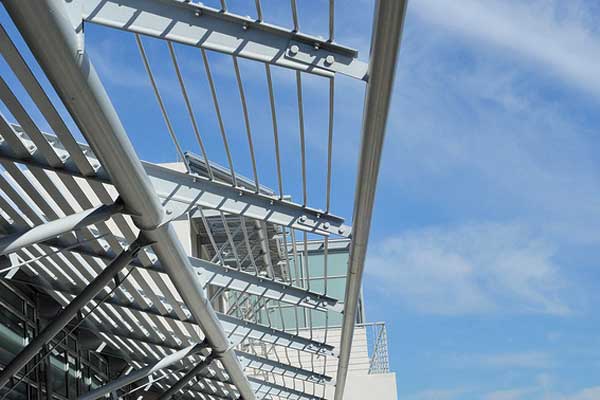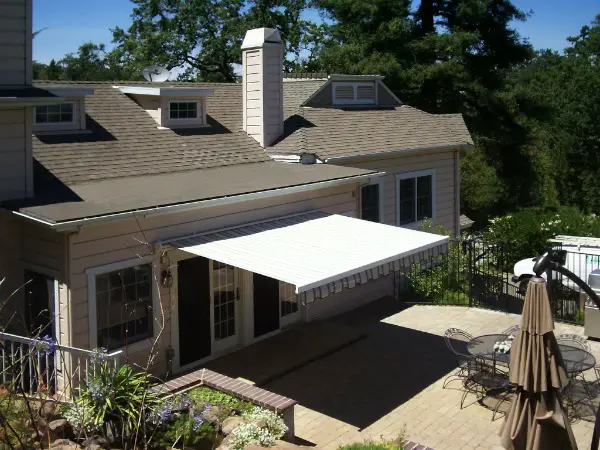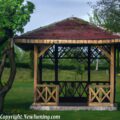Last Updated:July 23, 2024
Best Hard Top Gazebo Review for 2021

Do you want a gazebo for the outdoors that is not only stylish, but also functional? A hard top gazebo may be just what you need. These structures are designed to provide shelter from sun and rain in all seasons.
The best hard top gazebos will offer protection from wind and snow as well. But with so many available on the market, how do you choose which one is right for your needs? Don’t worry – we have created this buyer’s guide to help!
We’ve spent more than 80
hours researching gazebos, and we’ll share our
results with you. Lots of structures are and
well-constructed – the real trick is finding one
that’s high-quality, well-priced and guaranteed to last.
- What’s the best roof material?
- What’s the right size for you?
- How do they handle snow and ice?
- What’s required to setup a gazebo?
- How to get the best gazebo for your budget?
Most Important Factors for Evaluating Gazebo Quality
- Type Of Metal: The type metal used in a hard top will affect its weight, strength as well how it holds up to corrosion over time (weather). Aluminum is often lighter than steel but can be more expensive depending upon thicknesses; galvanized or stainless. Additionally, powder-coated steel is the highest grade option. The latter can easily last decades with proper care.
-
Gazebo Size: The very smallest gazebos will be 6′ x 8′ which works out to 48 square feet. Unless you have a very tight yard, we always recommend going larger. The minimum we recommend is 10’x10′ which is 100 square feet or more than double the square feet.
12′ x 12′ awnings are quite popular, and these come in at 144 square feet. This is the perfect size to comfortable seat 4-6 people with a grill in the corner.
The final popular size is the 14′ x 14′ gazebo, which is 196 square feet. This has 4 times the amount of covered space compared to the 6′ x 8′. This is perfect if you are going to have large family gatherings or do a lot of out door entertaining. - Roof Type: The two main types of roof are vented or traditional. Vented roofs are far preferred if you want to have a grill, smoker or fire pit in the gazebo. The vent ensures that smoke has a way to escape the canopy of the gazebo. Our research showed that vented roofs cost around $300 more than traditional roofs at all size levels.
Below we’ve created a frequently asked questions (FAQ) to help you in your buying decisions.
Why add a gazebo to your backyard?
They can be a great focal point for your yard. They create a nice gathering point for entertaining. The covered area provide a place for a hot tub, grill, fire pit or simply seating. Gazebos can also create a nice ROI by creating more usable living space. A 10′ x 10′ can be as low was $3 per square foot. For perspective, our current house $138.31 per square foot.
Are Gazebos waterproof?
Yes. Most gazebos will have a metal roof which will be completely waterproof. There are some budget gazebos with fabric roofs, and these are water resistant. The metal roof gazebos can be used year round, and they are designed to be setup once and left up. The fabric top are normally only setup for special events or parties.
What are gazebo roofs made from?
There are three popular options. Galvanized steel is the preferred choice. This is stainless steel steel that has zinc and/or nickel added to greatly increase its lifespan. This will make it very resistant to the elements and will last for more than a decade. The second option is aluminum roofs. These are more lightweight, and they can be used for areas that get less snow. They are a great balance of price and performance. Polycarbon are the least expensive option. These are used for budget gazebos. The are water resistant, but don’t stand up well to heavy snow. If you go with this option, we suggest using a broom to remove any accumulation of snow to limit damage.
What are gazebo weights?
Metal roof gazebos can range from 100 pounds all the way up to 285. The primary difference will be the metals used in the frame and roof. Galvanized steel will be the heaviest and aluminum is the lightest.
Are pop up gazebos good?
We’ve written a separate guide on pop up gazebos. There are definitely some trade offs, but they can be a better choice for someone who just wants a shade structure that’s setup part of the year.
Can gazebos withstand wind?
Yes. We live in Arizona, and there are gazebos setup in many of our local parks. They have weathered all the elements for years. My grandparents had a gazebo that held up more than a decade. It was a center of our outdoor family gatherings until they moved to a smaller home.
Can a gazebo go on concrete?
Absolutely! I would consult your local home depot or lowe’s for their suggestions on brackets and braces in your area. They will have the information for your local area. What will work here in Arizona won’t necessarily be right for other regions. We have seen many gazebos installed onto concrete.
Can a gazebo go on a deck?
Yes. This is an easier install than onto concrete, but our advice will be the same. Consult your closest big box store for advice. Both Lowe’s and Home Depot have a pros corner where they will have trained professionals that can give you specific advice for your area.
Can a gazebo be square?
Yes. There are plenty examples of square gazebo’s. The most popular size is 10′ x 10′, and we’ve recommended several in this size.
Can a gazebo be used as a carport?
Yes, this is a great use. I’d suggest measuring your vehicles before placing your order. Remember, gazebos are measured from the outside corners. If you’re going to use it as a carport, you’ll need the clearance on the interior of the pole. I’d also suggest a good bit of clearance as you don’t want to hit one of the support poles with your car.
Can a gazebo be moved?
This is difficult for metal roof gazebos. They are designed to be attached to the ground so you would first need to detach the poles and cover from its supports. Then you would need to move it and reattach everything. I don’t think this would be something the average DIY’er should do, and I’d suggest hiring a trained professional or company to handle this.
Can a gazebo be washed?
Yes, and you should absolutely clean the gazebo at least once per year. This can be as easy as spraying it off with a garden hose, and then wiping away the debris with a long handled brush. In case, you need one, here’s a link to our favorite long handle brush that we recommend for cleaning awnings, gazebos and other shade structures.
Can you wash gazebo curtains?
This depends on the fabric of the curtain. I’d suggest contacting the individual manufacturer to ask about your individual product.
How many sides does a gazebo have?
The most common shapes are square/rectangle that have 4 sides. Octagons which have 8 sides and round which don’t really have straight sides. We recommend the 4 sided awnings for most people. The 8 side awnings can have a fancier aesthetic to them.
What are gazebo wind bars?
These are rigid metal poles that add strength to fabric top gazebos. We cover them in more detail in our cloth roof gazebo guide.
When were gazebos invented?
The earliest gazebos can be traced back 5000 years to Egypt. They were also built by Persians, Greeks and Romans. They became popular in Europe during the middle ages, and didn’t make as splash in the US until the 1940s. (Source: https://en.wikipedia.org/wiki/Gazebo)
Where to buy gazebo?
We really like Amazon for gazebos. They have a wide selection of more than 100 gazebos in stock. They also offer delivery right to your door. Gazebos can weight several hundred pounds so transporting it from your local hardware store can be a challenge.
Where should you place a gazebo in your backyard?
We recommend roughly the center of your yard. This will serve as a focal point of your yard. Additionally, it will allow easy access from all sides. We’ve seen some people install it close to their home on their patio, and in most cases they regretted this decision. Ultimately, it’s a personal decision, and we’d love to hear where you installed your awning in the comments below.
Which gazebo is best?
We really like the model by Sojag. It has an aluminum frame and galvanized steel roof. The manufacturer offers replacement parts and accessories. It’s a perfect all weather awning that can handle snow.
Who invented the gazebo?
Gazebos were first seen over 5000 years ago, and there isn’t a named person who is credited for its invention. Various types of shelters can be traced back to Egypt, Persia and China. (Source: https://www.amishgazebos.com/gazebo-history/
Will a gazebo kill my grass?
Proably! At the very least, it won’t be healthy for the grass underneath it. The roof will greatly inhibit the sunlight it receives. Additionally, if you are going to install it on the lawn with no foundation, you’ll need to regularly water the grass too as the roof will also hinder the rainfall from getting to the grass under the gazebo.
Our research process
Our team of editors reviews more than 100 products for each of our guides. We only consider items that have stood the test of time. We want them to be produced by companies who have been in business for years.
We see a lot of manufacturers take a short-sited approach by making low quality products, and then just launching the same garbage under a different brand once the customer reviews start coming in. Because we only recommend established companies, we can eliminate many of these risks.
We also look for products that have an active support community, and that meet the residential building codes for most states. Some states like Florida and California have more restrictive building guidelines so going with products that meet those standards mean that should work in most other parts of the country.
Finally, we also look at the technical elements of the products. Our site was established in 2012, and we’ve built up an expertise in the shade and awning space. We know the weights of fabric, the types of metal frame, and understand how to evaluate the gears. We’ve also written extensively on awning repair and maintenance so we can speak to the life expectancy.
After several years in business, we expanded to other products in the patio and backyard space. We live in Arizona, and we’re able to spend most of the year outside.
Finally, if you have any questions, feel free to send us a message on our contact form.










